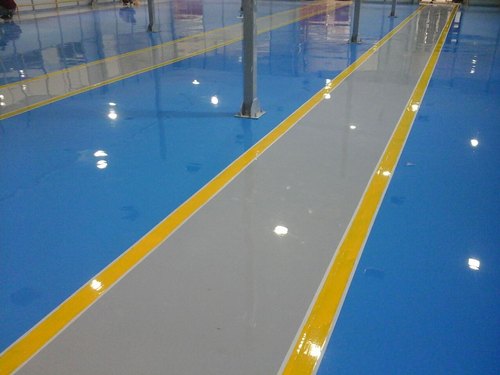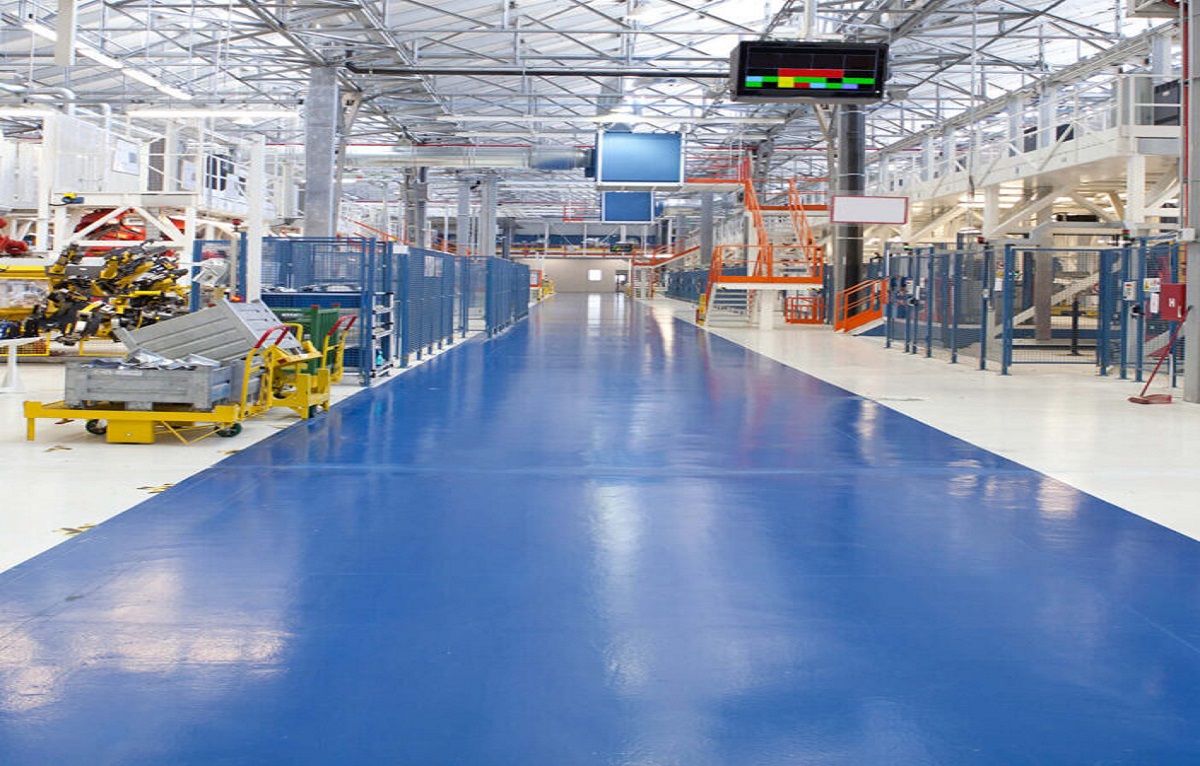
Epoxy flooring is a great option for any space that is small or large. From bathrooms, to kitchens and basements, epoxy will become the easiest way to clean up messes and keep floors smelling fresh.
This article will introduce you to what epoxy really is and how it will help your life become much easier. You’ll learn how to apply epoxy, and how long you can leave it on. You’ll also learn about the different colors, shapes and sizes of epoxy that are available for purchase.
Make sure you read through the pros, cons and FAQs before you begin your project with the help of this article.
Contents
- 1 Can you epoxy wood floors?
- 2 Can you put tile over epoxy flooring?
- 3 What is the difference between epoxy and polyurethane?
- 4 How long before you can walk on epoxy floor?
- 5 How do you repair a hole in epoxy?
- 6 Can i epoxy my garage floor myself?
- 7 How do I epoxy my hardwood floors?
- 8 How much does it cost to install epoxy?
- 9 How much does it cost to install epoxy?
- 10 Can you put epoxy on vinyl flooring?
- 11 Can you put epoxy on wood floors?
- 12 Can you buff epoxy floors?
- 13 How much does epoxy cost per square foot?
- 14 Can you do epoxy floor on plywood?
- 15 Conclusion:
Can you epoxy wood floors?
The answer is ‘Yes’. Whether you need to repair holes, chip away at peeling or have to apply a new layer of epoxy over old damaged floors, there are many options available.
Epoxy is an epoxy resin that can be mixed with powdered formers, oils and solvents. When mixed together, it hardens into flooring in several minimalist steps.

You can add color to your floors by filling in cracks with a coloring agent before smoothing out the finish with a putty knife. Individual colors are available, as are different shapes and sizes.
Can you put tile over epoxy flooring?
You can tile over epoxy, but it needs to be a certain type of epoxy. It has to be an epoxy with built in “gravel” or flecks. If it’s not, you won’t be able to use tile as the tiles will just stick to the smooth surface.
Epoxy is a great choice for floors that are frequently walked on and are prone to staining from oil, grease and other liquids. Whether you have pets, kids or adults that tend to drop things and make a mess, epoxy is the perfect solution.

The price for a single room of epoxy is about 20tk per square foot. Epoxy can become very expensive, so make sure you buy from a reputable seller when you first start out. Be sure to read reviews and check with different companies to find out what’s best for your home.
What is the difference between epoxy and polyurethane?
The biggest difference is that epoxy can be added to with colors and shapes to create a more customized look. Polyurethane requires that you purchase a certain color already, or spot paint the floor yourself.
Polyurethane also requires added coats in order to get the same level of protection as epoxy, but they are both still very affordable options. Epoxy is a great alternative to polyurethane, which is why it is starting to be more popular.
Epoxy vs Polyurethane:
Before you decide which type of flooring you want to install in your home, it’s important to understand what each material offers. Epoxy and polyurethane both provide excellent alternatives for homeowners who are looking for a non-toxic solution for their floors.
Epoxy vs Polyurethane:
Epoxy is a water-based adhesive that hardens in around 24 hours. It’s often used for floors, but can be used on any porous material. It’s also the best choice for bathroom tile because it’s not harmful to the environment, and epoxy won’t leach out into the water when you shower.
A polyurethane product is a foam-like substance that creates a hard finish on porous materials. It’s usually used for floors, but can be applied to just about anything. Some people prefer polyurethane, as it’s an easy-to-work with product that creates a durable finish in short time.
How long before you can walk on epoxy floor?
If you’re applying epoxy over old floors, it should take around 8 to 12 hours before you can walk on the finished product. It shouldn’t be hard when you apply it, but it does start as a liquid and become dry in about 24 hours.
If you’re adding epoxy to existing floors that haven’t been damaged too much, it should take between 24 and 48 hours before you can walk on the new floor. Don’t worry if it looks wet while you wait, as this is normal.

If you’re just applying epoxy to a smaller section of your floor, it should take around an hour or two before the floor is ready to be walked on. It can’t be walked on right away, but will harden fast because of how thin the epoxy coat is.
How do you repair a hole in epoxy?
Holes are the biggest problem with any type of flooring. If you’re not sure what you should do, or how to fix a hole in flooring, take a look at the diagram below.
First, patch the area with paper and tape. Do this by using a putty knife to smooth out the flow of epoxy and fill in any gaps. You’ll want to make sure that the patches are smooth and level, as that’s very important for it to look right.
Next, paint on a layer of epoxy. It should be thick, and you’ll need to use as much as possible. You can use a paintbrush to apply the epoxy to the floor, or a putty knife to press it directly onto the paper.
The most important thing is that you smooth out the epoxy with a paint roller so that it’s completely level.
Can i epoxy my garage floor myself?
If you want to use epoxy in your garage, it can be a great investment. While it will most likely cost more to install epoxy than a different product, the benefits that you’ll receive will outweigh the costs.
The biggest benefit of using epoxy over another type of flooring is that it’s made to be used in high-moisture areas. The best part is that there are no chemicals, which means this floor will be low-cost and easy to clean. You can also epoxy your garage floor by yourself, but it’s a little more difficult. In order to do it, you’ll need to mix up some epoxy and fill in any holes that you want to patch. You’ll want to make sure that the patch is smooth and level, and the ceiling or roof above should be at least 8 inches above.
The best thing is that you can use polyurethane for garage floors as well. It’s a little more difficult because you’ll need to use a trowel, but it’s still doable.
Doing your own garage floor can be a great project that you’ll enjoy. While it may take a lot of time, the reward you get when it’s finished will be worth every minute that you put in.
How do I epoxy my hardwood floors?
Hardwood floors are excellent for any home, but they can be tricky to maintain. Hardwood floors are often made from natural materials, and can be very expensive.
If you’ve determined that your hardwood floors need to be replaced, consider installing epoxy instead of another type of product. This flooring option is more affordable, and can last a long time when it’s fixed properly. The biggest benefit is that the epoxy won’t fade or wear away like regular wood does. Here’s a short guide for you to follow:
*Clean the area with soap and water.
*Apply the epoxy with a paint brush.
*Let the epoxy dry overnight.
*Sand down the floor so that it’s smooth.
How much does it cost to install epoxy?
The costs of different flooring materials can vary depending on what you purchase. Epoxy is a durable flooring product, so it’s less expensive than other types of flooring. This can help to keep the price lower overall. Regardless, there are different levels of quality that you can choose from when you’re shopping for epoxy floors. Here’s a quick breakdown:
Cost of epoxy floors – 170tk – 160tk per square foot.
This is the price of an average epoxy floor, but it all depends on where you live. There are some people who spend as much as $1500 or more on their new flooring, and some spend less than half that amount.
How much does it cost to install epoxy?
If you want to install epoxy yourself, you can expect to pay around 20tk per square foot. The cost of this product can vary greatly, depending on where you live. For example, it can cost as little as 10tk per square foot for a painted area in a city that’s popular for tourists. In many cases, it can be more than 40tk per square foot.
The price of epoxy is going up because people have learned that it doesn’t have to be costly to install good quality flooring. Many people pay less than 20tk when they install epoxy themselves.
Can you put epoxy on vinyl flooring?
Yes, you can use epoxy on vinyl floors. It’s a good idea to do the prep work before you apply the epoxy to the floor, as that will make a huge difference.
If you’re applying epoxy over some old, damaged vinyl flooring, you’ll want to make sure that it’s extremely clean before you do anything else. You can take off any old vinyl, and use sandpaper to make all of the surfaces smooth and even. It’s a good idea to start by grinding off any imperfections, and then use a wet/dry sandpaper to smooth out the surface.
Make sure that you’re doing everything the right way when it comes to your prep work. You should also use water or solvent cleaning procedures, and make sure that the floor is completely dry before you put any epoxy on.
Can you put epoxy on wood floors?
Yes, you can install epoxy on wood floors. Just make sure that you clean the floors first and apply the polyurethane with a paint roller to get a more even finish.
can i paint over epoxy floor?
Yes, you can paint over epoxy flooring, but it’s not recommended. First, make sure that you apply a primer before you paint, because this will help the paint stick better to the flooring.
On top of that, make sure that your paint is water-based and easy to clean. Don’t use oil-based paints for floors, as they can damage epoxy and make it impossible to clean.
You can use simple latex paints to cover epoxy, but make sure you buy one that’s specifically made for floors. Don’t use any other type of paint; it won’t work. Once you do everything the right way, painting over epoxy isn’t too difficult.
Can you buff epoxy floors?
Yes, you can buff epoxy floors with a light machine. Make sure that you use a buffing pad and that the machine is set to high speed.
How much does epoxy cost per square foot?
The cost of epoxy is going up because people have learned that it doesn’t have to be costly to install good quality flooring. Many people pay less than 20tk when they install epoxy themselves.
Can you do epoxy floor on plywood?
Yes, you can use epoxy flooring as a replacement for plywood. This is a great idea because it will add more reinforcement to the plywood below it.
It’s important that you use a flooring product like this instead of relying on the plywood itself, because the plywood can easily snap if too much pressure is put on it. Epoxy flooring for floors will make the whole structure more stable and secure, which is why people are beginning to choose this product over other types of flooring.
Conclusion:
Epoxy flooring is starting to become more popular, as it’s a highly durable and affordable type of flooring. It’s a good idea to choose this option if you want to save money on your flooring project.
Related Post:
- Epoxy Flooring In Uttara, Dhaka
- Epoxy and PU Flooring Company In Dhaka, Bangladesh
- Epoxy Flooring Supply And Application In Bangladesh
- Epoxy Resin Price In Bangladesh
- Epoxy Coating and Paint Bangladesh
- Epoxy flooring in Bangladesh
- How to Make Epoxy Floors Shine?
- Are Epoxy Floors Expensive?
- Is Epoxy Flooring Slippery When Wet?
- How Much Does Epoxy Flooring Cost Per Square Foot?
- Is Epoxy Flooring Cheaper Than Tile?
- Do Epoxy Floors Scratch Easily?
